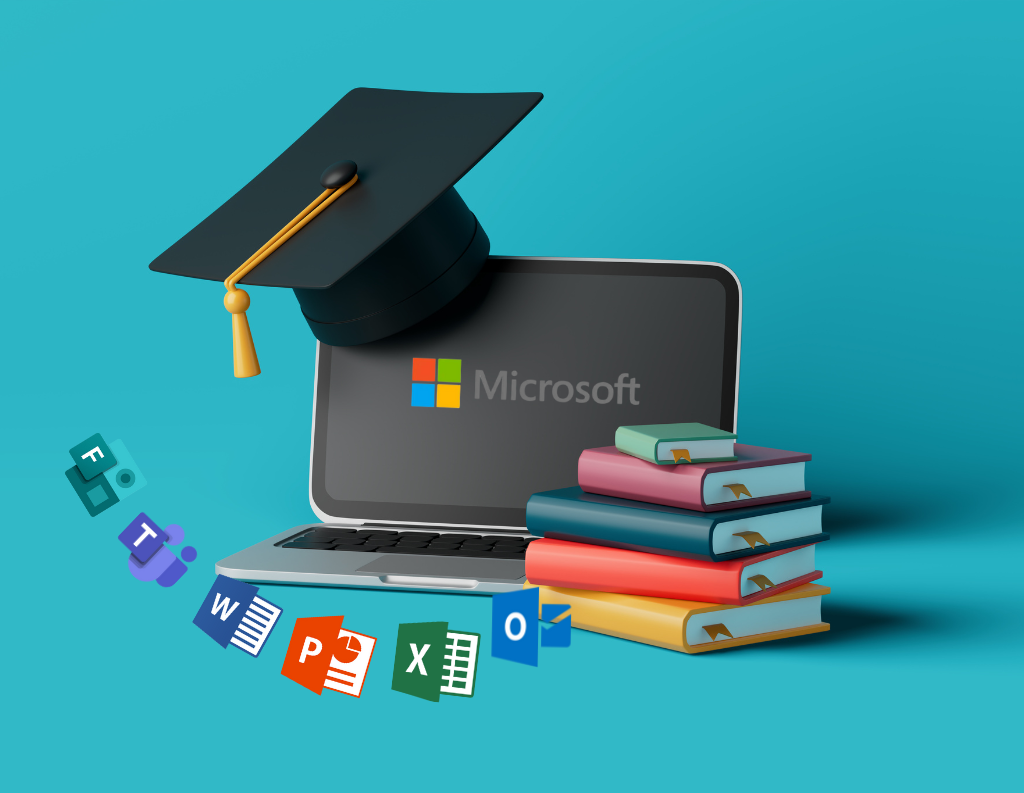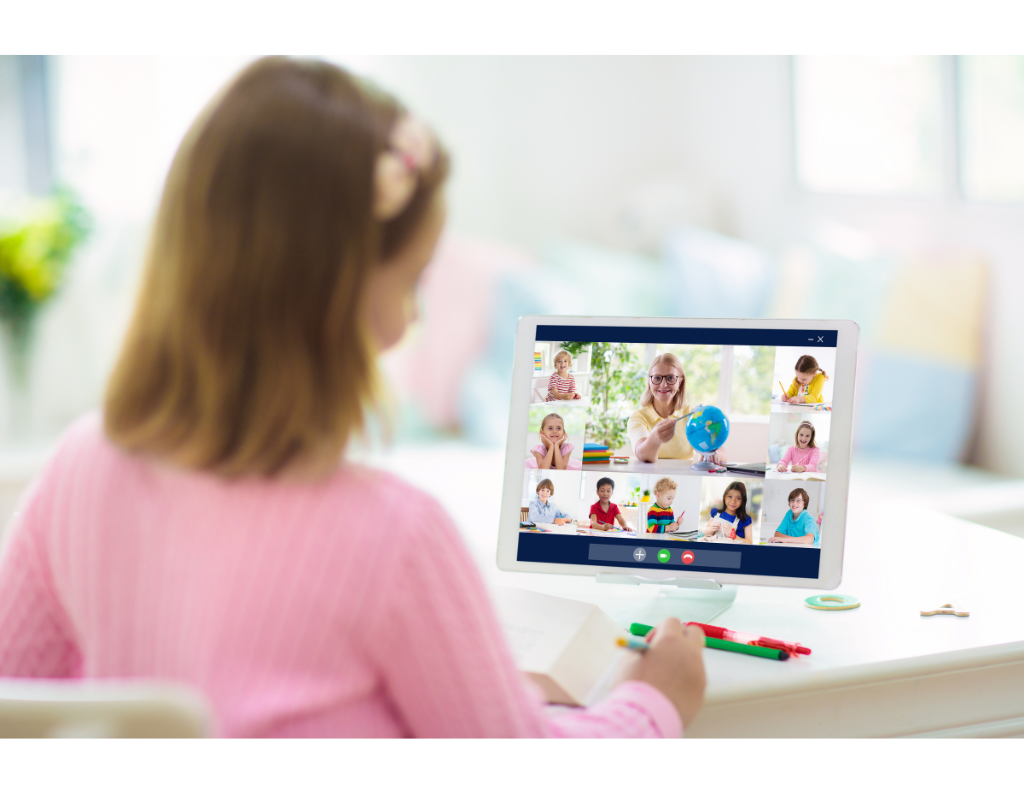In today’s educational world, remote learning isn’t just a temporary fix. Rather, it’s become a lasting solution. Fortunately, Microsoft 365 for School offers a powerful suite of tools to support remote classrooms, helping teachers create engaging, interactive, and organized digital learning experiences. If you’re looking to make remote learning more effective, Microsoft 365 can make a real difference!
Let’s dive into how you can enhance remote learning with Microsoft 365. Together, we’ll explore features that keep students engaged, improve communication, and make class management easier than ever.

The Key Features of Microsoft 365 That Support Remote Learning
Microsoft Teams for Virtual Classrooms
Microsoft Teams serves as the cornerstone of remote learning with Microsoft 365. Essentially, it’s a digital classroom where teachers and students can meet, share resources, and collaborate—all in one place. With video calls, live chats, and group spaces, Teams brings the classroom experience online.
- Breakout Rooms: To begin with, Teams offers breakout rooms, ideal for group projects or small discussions. In this way, teachers can easily split students into smaller groups for more focused learning.
- Live Q&A and Chat: Additionally, the live chat and Q&A tools allow students to participate in real time, making remote learning interactive. So, no need to raise hands!
In short, Teams helps create a vibrant, interactive environment where students feel connected and engaged.
OneNote for Digital Notetaking and Assignment Management
Microsoft OneNote acts as a digital notebook—but with added benefits. Besides taking notes, it’s also a great tool for organizing assignments, tracking progress, and even adding multimedia elements.
- Interactive Notebooks: For starters, teachers can set up notebooks for each class or student, where they can take notes, complete assignments, and get feedback, all in one spot.
- Multimedia Support: Furthermore, OneNote supports text, images, audio, and even drawings, so students can bring creativity into their work.
With OneNote, both students and teachers can stay organized and easily find materials whenever they need them.
SharePoint for Resource Sharing
Similarly, SharePoint serves as a central hub for school resources. Think of it as a digital library where teachers can post assignments, announcements, and additional materials, so students have everything they need.
- Resource Library: First, teachers can organize resources by class or topic, making it easy for students to find assignments and study materials.
- Collaboration Spaces: Moreover, SharePoint allows students to work together on group projects and submit work as a team.
A central platform like SharePoint ensures students have everything they need, making remote learning feel more seamless.

Benefits of Using Microsoft 365 in a Remote Learning Environment
Enhancing Student Engagement
While keeping students engaged remotely isn’t always easy, Microsoft 365 makes it possible.
- Real-Time Reactions and Polls: For example, Teams allows students to react with emojis or take quick polls, so teachers get immediate feedback.
- Collaborative Documents: Additionally, students can work on Word, Excel, and PowerPoint together in real time, helping them feel like part of a team.
With these tools, teachers can create a dynamic online classroom where students stay interested and involved.
Streamlining Communication and Feedback
Certainly, good communication is essential, especially in remote learning. Luckily, Microsoft 365 offers tools that keep everyone connected.
- Outlook and Teams Messaging: For instance, teachers, students, and parents can communicate quickly and efficiently through Outlook and Teams.
- Timely Feedback: Using OneNote and Teams, teachers can provide feedback fast, so students stay motivated and on track.
With smoother communication, students and teachers can work together more effectively, exchanging ideas and support with ease.
Flexibility and Accessibility for Students and Teachers
In addition, Microsoft 365 offers flexibility, making it easy for everyone. Students and teachers can log in from any device, whether it’s a laptop, tablet, or phone.
- Accessibility Features: Microsoft provides tools like Immersive Reader and high-contrast mode to support diverse learning needs.
- Cross-Device Compatibility: Students and teachers can log in from any device, ensuring that learning can continue no matter where they are.
This flexibility allows students to attend classes, access resources, and complete work regardless of location.
Setting Up Microsoft 365 for Remote Learning Success
Preparation Tips for School Administrators
School administrators play a key role in ensuring a smooth start by organizing Microsoft 365 properly.
- Centralized Resources: Begin by setting up a SharePoint site where all teachers can post important resources, syllabus, and schedules.
- Permissions and Security: Furthermore, make sure to set permissions that keep information secure while ensuring easy access for students.
A well-structured setup not only saves time but also reduces confusion for everyone involved.
Training Teachers to Use Microsoft 365 Effectively
To make the most of Microsoft 365, teachers need to be fully trained on its features.
- Professional Development: Encourage teachers to attend training on Teams, OneNote, and Forms to improve teaching effectiveness.
- Ongoing Support: Besides initial training, offer help-desk support or peer mentors to troubleshoot issues and give advanced tips.
A well-prepared teacher is essential for a successful remote learning experience.
Empowering Students and Parents to Use Microsoft 365
Guiding students and parents on how to use Microsoft 365 can make learning much smoother.
- Guides and Tutorials: Provide easy guides that explain logging in, navigating Teams, and finding assignments.
- Parent Involvement: Encourage parents to support their children by understanding Teams and OneNote basics.
With a little guidance, students and parents will feel more confident using Microsoft 365.
Practical Tips for Enhancing Remote Learning with Microsoft 365
Leveraging Integrations and Add-Ons
Microsoft 365 integrates with many additional apps, further enriching the learning experience.
- Whiteboard: For example, teachers can use Whiteboard for brainstorming or visually explaining ideas.
- Forms for Quick Assessments: Furthermore, Forms works perfectly for quizzes or surveys, allowing teachers to assess learning on the spot.
These add-ons make lessons more versatile, so teachers can tailor classes to different learning styles.
Personalizing the Remote Learning Experience
Personalization, in particular, can make remote learning feel more meaningful for each student.
- Team Channels for Small Groups: For instance, creating Teams channels for study groups or project teams encourages teamwork.
- Individualized Feedback in OneNote: Plus, teachers can use OneNote to give personalized feedback, supporting each student’s growth.
When students feel lessons are tailored to them, they’re often more motivated and engaged.
Addressing Common Challenges in Remote Learning with Microsoft 365
Overcoming Technical Difficulties and Ensuring Accessibility
Of course, remote learning brings technical challenges, but Microsoft 365 has ways to reduce them.
- Troubleshooting Tips: First, teach students and parents basic troubleshooting like clearing the cache or updating apps.
- Accessibility Settings: Furthermore, encourage students to use Immersive Reader, translation tools, and high-contrast mode when needed.
By addressing tech and accessibility concerns early, students can stay focused on learning.
Maintaining Student Focus and Discipline
Staying disciplined remotely is tough, given all the distractions at home.
- Structured Schedules: Encourage students to use the Teams calendar to set routines and reminders.
- Accountability Tools: Lastly, Forms can be used for check-ins and progress tracking, helping students stay on track.
These strategies bring structure to remote learning, making it easier for students to focus on their work.
All in all, Microsoft 365 for School opens up endless possibilities for remote learning. Its tools make classes more engaging, interactive, and organized. By using Teams, OneNote, and SharePoint, schools can create a supportive, rich online learning environment. Whether your school is fully remote or using a hybrid model, Microsoft 365 is here to help create impactful and future-ready education.
Consider trying Microsoft 365 for your school to see how it can transform remote learning for students and teachers alike!
